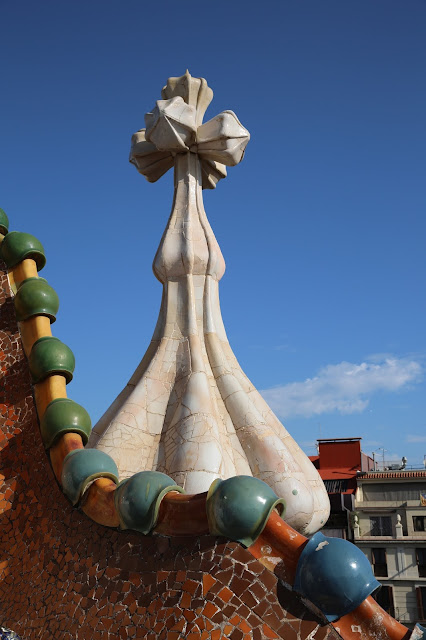2014 Apr 14-26
Nota: publicado en Inglés: vamos a
editar e incluir versión en español pronto.
We had the opportunity to visit South Korea (The Republic of
Korea) and spent a week exploring the country (or as much as is reasonably
possible in a week) and then a week on business in Seoul. This country was in a
category which might be described as “we
had no idea how much there was to learn and enjoy”. Although obviously
being aware of the country and its technology and food, at least at a
superficial level, we were to learn a great deal about its amazing history and
culture in our visit.

We arrived in Incheon Airport after a long two days of travel
from home, remembered to pick up a local SIM (since the phones in South Korea
operate on a system different from everywhere else it seems) and made our way into
Seoul, to Gyeongbukgung, where we would stay for 3 nights. This district is
centred around one of the old city gates, and now includes one of the many
markets in the city. We ate at one of these: Stall 18, Kwangjung market. During
the day we visited the National Folk Museum, and walked around Bukchon. During
the next two days we visited Changdeokgung, Insadong, Deogsugung, the Namdaemun
gate and market, and Namsan Village, also taking in a performance at Korea
House.
The road system in South Korea is efficient and extensive, and
the following day we picked up a rental car (with GPS in English – absolutely essential
in our view) and headed off to explore some of the country.
Our GPS was entertaining, and among other aspects of its particularity, had scenic dsiplays rather than the usual ones with which we are familiar elsewhere:
Initially south to Hahoe
village, where Mr Ryu Saehu welcomed us to stay at his 217 year old Bukchondaek
home. Our welcome was warm and we were shown around the home, with its evidence
of occupation by 5 generations of his family. Dinner was early, with multiple
plates of delicious food, all of which was new to us. After dinner, we retired
to bed early, having first explored the many evening opportunities in this
traditional village.
Hahoe Village, a UNESCO World Heritage site, is home to
descendants of the Ryu clan of Pungsan and is known for its traditional houses.
Next day we wandered around the village, down to the river,
and up to the clifftop, appreciating the scenery in this tranquil rural
setting.
We then headed further south to Gyeongju (not to be confused
with Jeonju), where we visited the Bulguksu Temple before dining at Twosome
Place and retiring to the Gyeongju Tourist Hotel.
“Gyeongju holds more
tombs, temples, rock carvings, pagodas, Buddhist statuary and palace ruins than
any other place in South Korea” (Lonely Planet Guide). It was
truly amazing to learn about so many important sites in this city, previously
unknown to us, which was the capital of the Shilla Kingdom for a thousand years.
So in the morning we explored the Tomb Park, Observatory, and
walked to the Buddha Grotto above Bulguksu, among crowds of Koreans in
multi-coloured hiking clothing. Then we visited the National Museum before
heading west to Jeongju.
Jeonju is one of UNESCO’s “Creative Cities for Gastronomy” (you can probably appreciate our
motives in visiting), and also has interesting historic architecture and
scenery.
That evening we wandered the old streets and found a small
welcoming restaurant, where we were welcomed by the friendly owner, and also by
the other diners, one group of whom, enjoying a particular dish which is not
easily found, shared it with us, to our surprise and appreciation.
In the morning, after exploring the old town we headed north,
back towards Seoul, and on the way planned to visit the Suwon Hwaseong Fortress.
At first it seemed that our GPS was letting us down since it was having trouble
giving us clear directions to the fortress, however it soon became clear that
this was because the fortress was in fact immense, and so we parked below the
walls and embarked on a walk around the battlements.
We then headed back to Seoul, to drop off the car, returning to
Seoul via the amazing Metro to book into the hotel where we would be staying
for the next week.
During this week we worked during the day and then continued
to take advantage of the culinary and other opportunities in the city: Gangnam
market, Seollung/Jeongnung with its tombs, Sanwon Garden (with steak which is
certainly in the top three in the world, in our experience, if not at the very top
of the list), and an amazing variety of excellent street food. One evening we
went to see “Nanta”, a non-verbal comedy cooking show (!), the longest-running
show in Korean history.
We
had not laughed so much in years! We also attended Verdi’s Requiem at the National
Music Hall, which was stunningly well-performed by the Korean Symphony
Orchestra and Chorus.
Our final visit in Seoul before heading to the airport to
return home was the amazing Fish Market, huge and full of fish with which we
were completely unfamiliar.
This country is fascinating: friendly people, delicious food,
a rich history (largely unknown to us), and a distinctive culture. Our stay was
full of new experiences and enjoyment, long to be remembered with pleasure.
Photos may be used for
non-commercial purposes with credit to alanymarce@gmail.com






















































